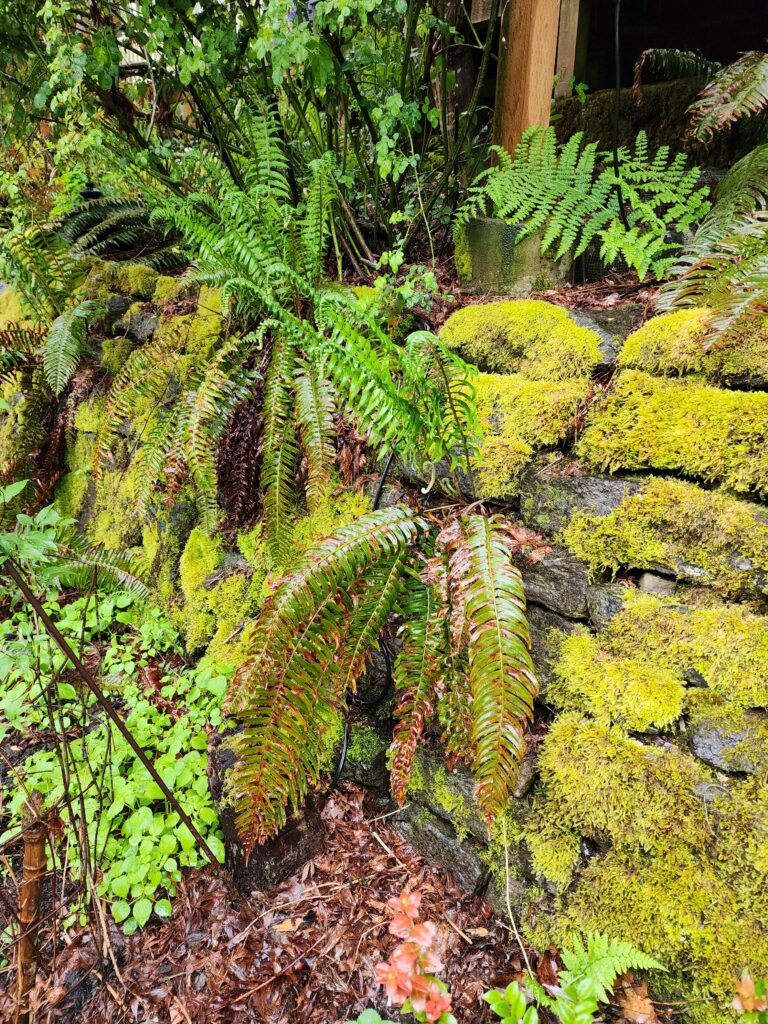Site Information: This habitat in unincorporated Washington County has full sun, part sun, shade, dry, moist, and sloped areas.
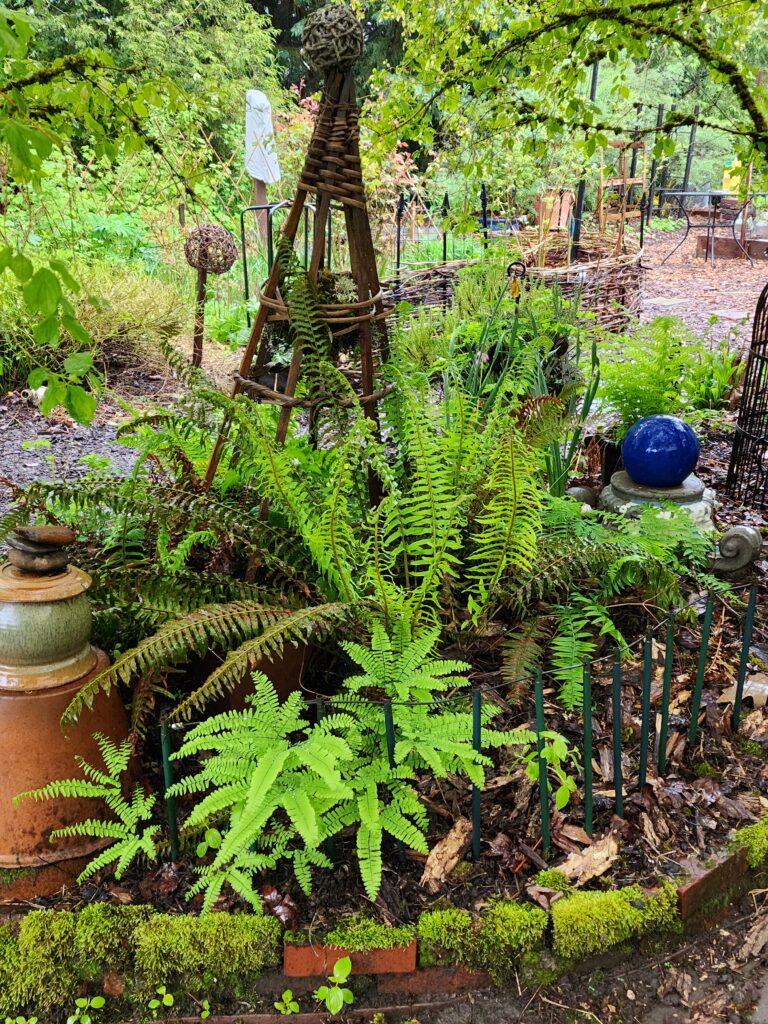
What inspired you to enroll in the Backyard Habitat Certification Program?
I have observed an alarming loss of habitat since moving here to Oregon in 1984. I always wanted to live in the woods, so I’m growing my own. I am gradually removing lawn and planting more trees as we lose some to natural disasters and county road development. I dug two water retention areas in my yard and planted wetland species before I knew what a proper raingarden was. I put up several birdhouses, but the birds find their own favorite spots(the honeysuckle, a spruce tree, and an old medicine cabinet tucked – in the hedge). I have a number of stumps and brush piles for wildlife, and a tree toppled by the wind provides a sanctuary under the up-turned roots. An old claw foot bathtub serves as a water feature with an “island” of red twig dogwood in the center.

How would you describe your habitat?
My property (~2/3 acre) has many mature trees that are nonnative, but every new tree that I have planted since starting the program is a native species (Cascara, Pacific dogwood, Doug fir, Alder, Bigleaf Maple, and Vine maple). I have removed grass from about 1/3 acre; I am a big fan of sheet mulching with cardboard and woodchips.
Each year I tuck in more native species in my flower beds, keeping mostly ornamentals that have some benefit for pollinators or edibles for myself. I am delighted when some natives spread themselves, like Camas lily, Douglas aster, golden rod, and yellow monkeyflower. Other spreaders, thimbleberry (!), are not quite so welcome.
To prevent my dogs from trampling some native plantings, I often weave fences from ninebark, red twig dogwood, and water sprouts from my fruit trees(pear, apple, plum).
I converted an old clawfoot bathtub into a tiny pond. In the center, in a pot, I originally planted corkscrew rush, but over the years, it has been taken over by a Redtwig dogwood, and last year a tiny Western Red Cedar seedling appeared. This year Camas Lily is the newcomer.
In the northeast and southeast corners of my yard, I dug out water retention basins before I had ever heard of a “rain garden”. I have since added a variety of natives. This winter, I added a third rain garden in the southwest corner.
I propagate plants as much as I can and have recently started some plants from seed (Rose Checkermallow). Redtwig dogwood, red flowering currant, and ninebark are fairly easy to get started with softwood cuttings, so I have a lot of these. I have also propagated Nine Bark and Evergreen Huckleberry by layering.
I have a 100 ft laurel hedge which I keep closely clipped so it does not flower. I have completely removed about 25 ft but have clipped open “caves” for wildlife access. Complete removal is in the future.
I wish I had planted native trees years ago, taken out the black locust when they were smaller and started removing that massive laurel hedge.

What are your top three favorite native plants, and why do you love them?
- Camas lily for color, and someday, I want to try eating them.
- Western red cedar in the winter snow.
- Redtwig dogwood for its versatility. Let it grow to a large shrub, or pollard it and weave the canes, or anything in between.
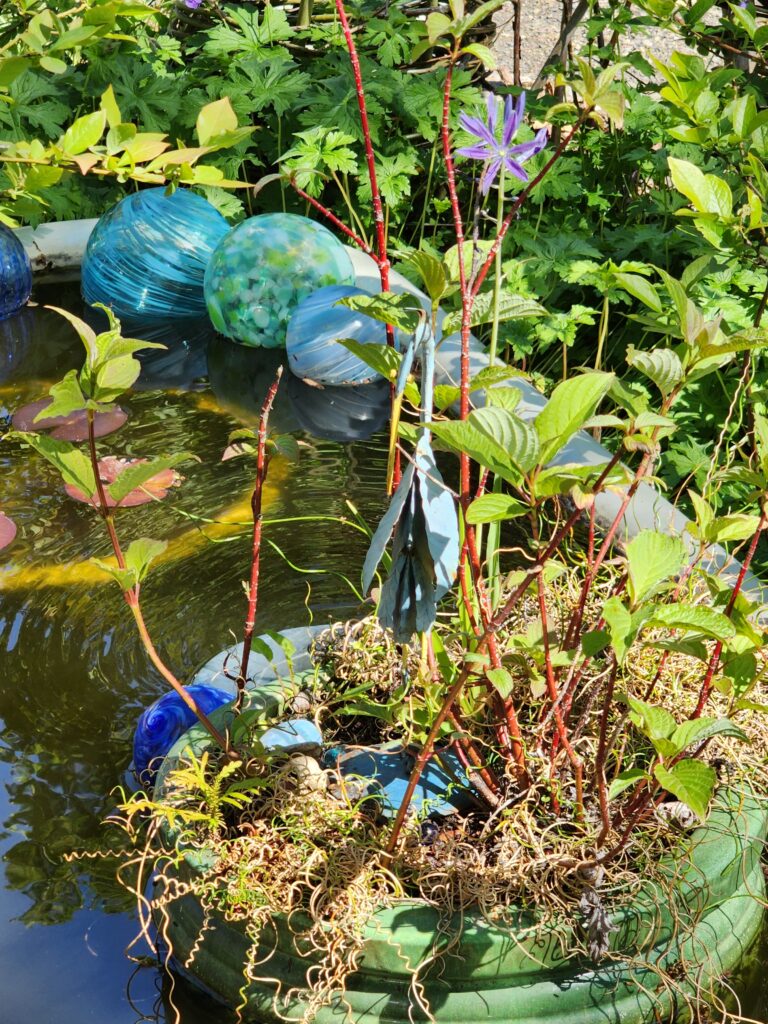
What changes have you observed as a result of creating habitat?
I love showing the neighborhood kids the snakes and birds and frogs. I was delighted to observe many birds even when I stopped using the bird feeders. I’ve noticed an increasing species of birds and better success gardening with wildly fluctuating temperatures.
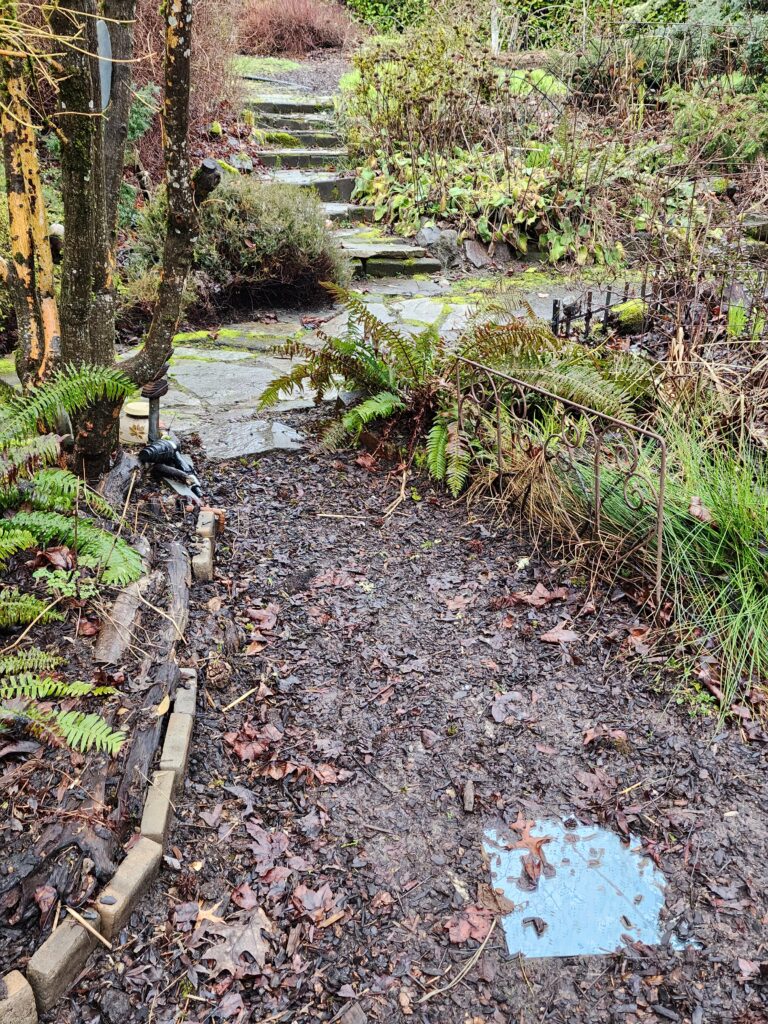
What were the two most significant challenges you encountered while creating habitat, and how did you address them?
I live at the crest of a hill, and before I grew a windbreak, I had trouble with plants desiccating in the summer. I used lots of mulch, but time and tall trees have helped. The laurel hedge has been and continues to be my nemesis. It’s a work in progress.

What resources did you find especially helpful?
- Tualatin Soil and Water Conservation District for hedge removal
- Friends of Backyard Habitats Facebook page
- Bosky Dell and Echo Valley nurseries, where staff gave helpful input
- Hiking in natural settings where observing plant communities gives me ideas of what might work in my yard.
Books:
- The Portland Plant List
- Eradicate Invasive Plants
- Plants of the Pacific Northwest
- Gardening with Native Plants of the Pacific
Northwest - Farming with Native Beneficial Insects
- Practical Permaculture
- Feed the Bees
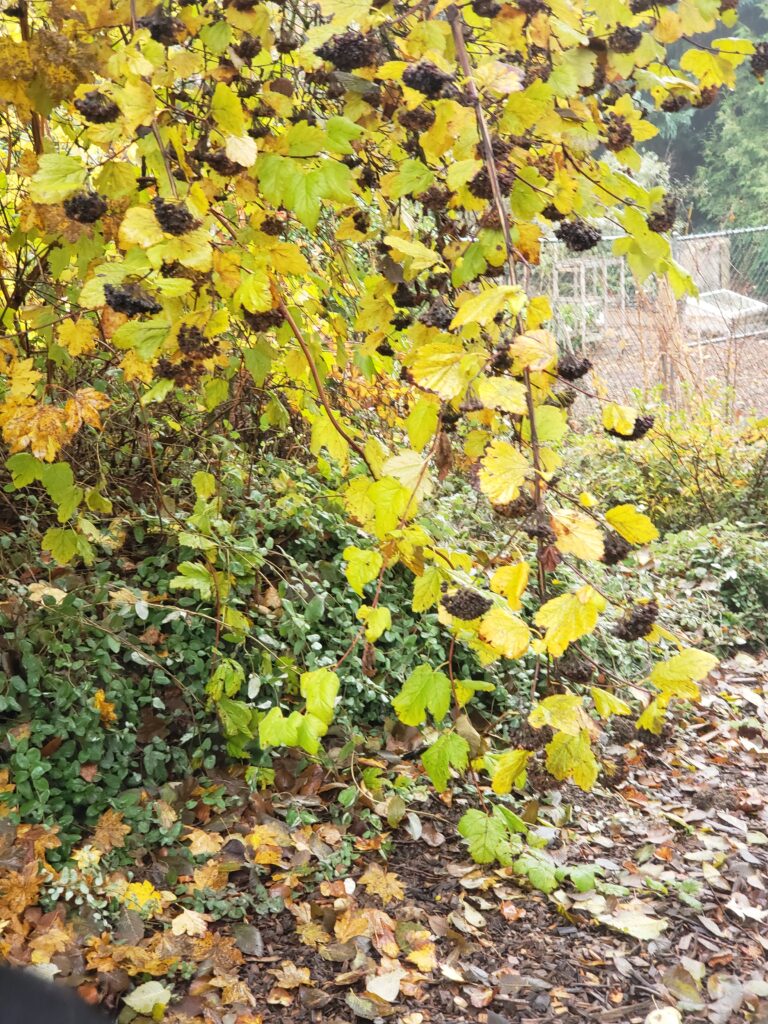
How do you enjoy your Backyard Habitat throughout the different seasons? What are its highlights in each season?
Coltsfoot, Fawn lilies, and Camassia in the Spring. A little later, Lupin and yellow monkey flower appear. When the summer heats up, the shade under the Western Red Cedar is wonderful. In the Fall, I enjoy the purple Douglas asters and goldenrod. In Winter, the Red Twig Dogwood looks lovely under snow, and Ninebark droops gracefully and has brightly colored leaves.

What part of your backyard habitat are you most proud of?
I have tiny favorites like the flowers on ginger, but I also love to look up at the trees I have planted that are now casting shade!

